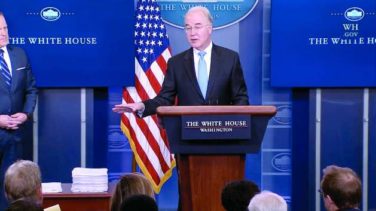AT THE PAS ANNUAL MEETING
SAN DIEGO (FRONTLINE MEDICAL NEWS) – Of children and teens on psychotropic medication prescribed by their primary care pediatrician or family physician, 21% simultaneously receive two or more different classes of the drugs for at least 3 months, according to a massive study.
“Given that the safety of pediatric monotherapy for some of these psychotropic medications is unexplored, these patterns of polypharmacy prescribing are alarming and warrant further investigation,” Dr. Robert Grundmeier said in presenting the study results at the annual meeting of the Pediatric Academic Societies.
He presented a study of 891,717 patients up to 18 years of age who received health care at 1 of 222 primary care pediatric or family medicine sites participating in the Comparative Effectiveness Research Through Collaborative Electronic Reporting (CER2) Consortium. He described CER2 as a “supernetwork” comprised of multiple electronic health record–based networks and led by the American Academy of Pediatrics. The consortium was designed to carry out very large pharmacoepidemiologic and comparative effectiveness studies.
The initial study population consisted of more than 1.2 million patients up to age 18 years, a figure that investigators whittled down to just under 900,000 by excluding those with a seizure disorder or less than 12 months of follow-up data.
Among the 891,717 subjects, 8.3% of boys and 5.3% of girls were treated with psychotropic medication by their primary care physician at some point. Of these 60,430 patients, 21% simultaneously received psychotropic drugs from two or more different classes for at least 3 months. Another 5,813 patients – 0.9% of all boys and 0.4% of all girls in the study – got psychotropic medications from three or more classes simultaneously, reported Dr. Grundmeier of Children’s Hospital of Philadelphia.
The most frequently prescribed category of medication was stimulants/atomoxetine, a treatment mainstay in attention-deficit/hyperactivity disorder. Antidepressants were No. 2 and were prescribed in 2.1% of all boys and 2.8% of girls. Atypical antipsychotics were prescribed for 1.4% of boys and 0.8% of girls.
The most widely prescribed two-class combination among patients receiving psychotropic medication was a stimulant and an alpha-agonist, given to 10.7% of boys and 5.6% of girls. The second most popular two-drug combination was a stimulant and an antidepressant, which was prescribed for 7.3% of boys and 7.1% of girls who took psychotropic medication.
The use of combination therapy incorporating an atypical antipsychotic was of particular interest because health policy makers have identified this as an issue of concern. The drugs aren’t approved by the Food and Drug Administration for patients younger than 5 years old, and yet the Agency for Healthcare Research and Quality has reported that the use of these medications in very young children with behavior problems doubled between 1999-2001 and 2007. Moreover, more than three-quarters of youths on Medicaid are taking an atypical antipsychotic for non–FDA-approved indications, including ADHD and aggressive behavior, according to Centers for Medicare & Medicaid Services data .
Dr. Grundmeier reported that a stimulant and an atypical antipsychotic were prescribed together for 7.5% of boys and 4.4% of girls on psychotropic medication, and an antidepressant and an atypical antipsychotic were given to 4.9% of boys and 6.4% of girls.
These CER2 data probably underestimate the true rate of psychotropic drug prescribing for children and adolescents, since prescriptions written by a psychiatrist wouldn’t necessarily be included in the primary care electronic medical record, Dr. Grundmeier said.
Audience member Dr. James M. Perrin, professor of pediatrics at Harvard Medical School and director of general pediatrics at Massachusetts General Hospital, both in Boston, commented, “One of the interesting things about these polypharmacy kids is they come in in acute crisis and someone adds a third or fourth drug, but when the kid gets out of the crisis, no one thinks about taking the drug away; he’s always on it.”
Dr. Grundmeier agreed that’s the classic pattern. Accordingly, a likely next step in this research project will be to scrutinize the CER2 Consortium data set in search of patterns of subtracting psychotropic drugs and simplifying management on the part of some primary care physicians. The ultimate goal is to gain an understanding of the effectiveness and potential adverse effects of psychotropic polypharmacy in order to develop evidence-based tools, such as clinical pathways to help support primary care physicians who are treating these young patients.
Another audience member, a pediatric critical care specialist at an urban public hospital, commented that the high rates of off-label psychotropic polypharmacy by primary care physicians documented in the CER2 study constitute an indictment of widespread inadequate psychiatric services for young Medicaid patients.
“There’s not a night on call when I’m not admitting a teenager trying to kill himself. So when I see your data, I split it into the ADHD group and the antidepressant group. And the patients admitted for suicidality have to leave the hospital after a maximum of 3 days, generally without psychiatric or social support services to supplement these medications,” she said.
This study was funded by the Health Resources and Services Administration. Dr. Grundmeier reported having no relevant financial conflicts.




